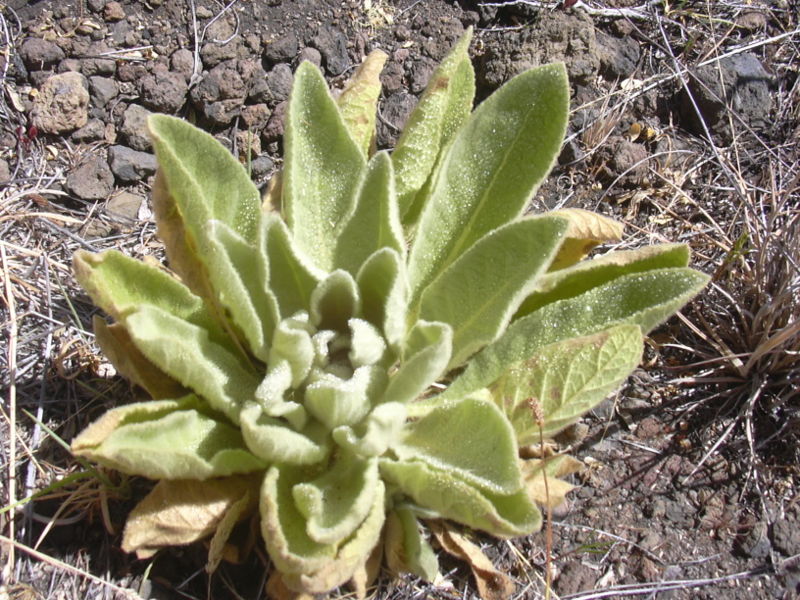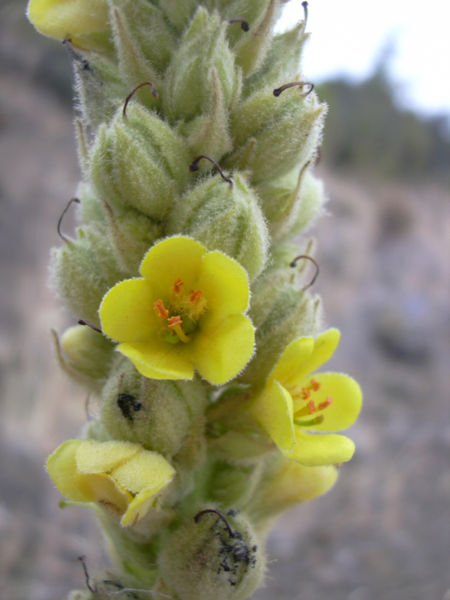Verbascum thapsusVerbascum thapsus (pronounced /vɝˈbæskəm ˈθæpsəs/; Great Mullein or Common Mullein) is a species of mullein native to Europe, northern Africa and Asia, and introduced in the Americas and Australia. It is a hairy biennial plant that can grow to 2 m or more tall. Its small yellow flowers are densely grouped on the tall stem, which bolts from a large rosette of leaves. It grows in a wide variety of habitats, but prefers well-lit disturbed soils, where it can appear soon after the ground receives light, from long-lived seeds that persist in the soil seed bank. It is a common weedy plant that spreads by prolifically producing seeds, but rarely becomes aggressively invasive since its seed require open ground to germinate. It is a very minor problem for most agricultural crops since it is not a very competitive species, being intolerant of shade from other plants and unable to survive tilling. It also hosts many insects, some of which can be harmful to other plants. Although individuals are easy to remove by hand, populations are difficult to eliminate permanently. It is widely used for herbal remedies with emollient and astringent properties. It is especially recommended for coughs and related problems, but also used in topical applications against a variety of skin problems. The plant was also used to make dyes and torches. Great Mullein has been used since ancient times as a remedy for skin, throat and breathing ailments. It has long had a medicinal reputation, especially as an astringent and emollient. It contains mucilage, several saponins, coumarin and glycosides. Dioscorides recommended it for diseases of the lung and it is nowadays widely available in health and herbal stores. Non-medical uses have included dyeing and making torches.
From Wikipedia, the free encyclopedia
|
|

